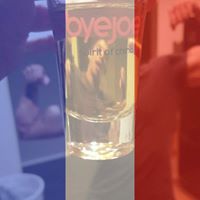Cesar Jesus Garza
age ~65
from Austin, TX
- Also known as:
-
- Cesar J Garza
- Cesar J Graza
- Jesus Garza Caesar
- Phone and address:
-
5400 Hickory Dr, Austin, TX 78744
(619)9341939
Cesar Garza Phones & Addresses
- 5400 Hickory Dr, Austin, TX 78744 • (619)9341939
- Bonita, CA
- San Diego, CA
- Chula Vista, CA
- Cedar Park, TX
- Escondido, CA
- Imperial Beach, CA
Us Patents
-
Method For Manufacturing A Lithographic Reticle For Transferring An Integrated Circuit Design To A Semiconductor Wafer
view source -
US Patent:6649452, Nov 18, 2003
-
Filed:Feb 28, 2002
-
Appl. No.:10/085960
-
Inventors:Kevin D. Lucas - Austin TX
William L. Wilkinson - Georgetown TX
Cesar Garza - Round Rock TX -
Assignee:Motorola, Inc. - Schaumburg IL
-
International Classification:H01L 2182
-
US Classification:438129, 430 5
-
Abstract:A lithographic reticle with subresolution features in the design-pattern is used to control critical dimensions in a semiconductor manufacturing process. After the location of design and processing features is determined, subresolution features are formed in areas devoid of design and processing features. The subresolution features can substantially fill all of the area devoid of design processing features or, instead, selectively fill portions of the area. In one embodiment, the width of the area devoid of design and processing features is less than two times the width of a feature. The presence of the subresolution features results in improved control of small dimensions of features in semiconductor processing, thereby increasing yield and device performance.
-
Method Of Forming A Rim Phase Shifting Mask And Using The Rim Phase Shifting Mask To Form A Semiconductor Device
view source -
US Patent:6797440, Sep 28, 2004
-
Filed:Aug 6, 2002
-
Appl. No.:10/213344
-
Inventors:Cesar M. Garza - Round Rock TX
Wei E. Wu - Austin TX
Bernard J. Roman - Austin TX
Pawitter J. S. Mangat - Gilbert AZ
Kevin J. Nordquist - Higley AZ
William J. Dauksher - Mesa AZ -
Assignee:Freescale Semiconductor, Inc. - Austin TX
-
International Classification:G03F 900
-
US Classification:430 5, 430394
-
Abstract:A semiconductor device is formed by patterning a resist layer using a rim phase shifting mask. A multilayer or single patterning layer to form the different phase-shifting regions and opaque regions is used to manufacture the rim phase shifting mask. First phase shifting regions are formed by transferring an opening in the multilayer or single patterning layer through an opaque layer and a transparent substrate. At least portions of the same multilayer or single patterning layer are used to recess the opaque layer a predetermined distance to form rims (second phase shifting regions). The first phase-shifting regions phase shift the light traveling through them 180 degrees relative to the light traveling through the rims, thereby increasing the contrast of the light traveling through the rim phase shifting mask.
-
Semiconductor Process For Disposable Sidewall Spacers
view source -
US Patent:6849515, Feb 1, 2005
-
Filed:Sep 25, 2003
-
Appl. No.:10/670634
-
Inventors:Cesar M. Garza - Round Rock TX, US
-
Assignee:Freescale Semiconductor, Inc. - Austin TX
-
International Classification:H01L 21336
-
US Classification:438301, 438304, 438306
-
Abstract:A semiconductor process and structure () uses a disposable sidewall spacer () associated with lightly doped drain (LDD) transistors. The disposable sidewall spacers are efficiently removed by a gaseous fluorine ambient. Either molecular or atomic fluorine gas is used to remove a silicon germanium sidewall spacer with high selectivity to exposed insulating layers. This etch process is also isotropic. An additional benefit of using a gaseous fluorine ambient is incorporation of fluorine in isolation regions () surrounding the transistors, thereby reducing the dielectric constant. Improved insulating properties of the isolations regions can allow increased integration.
-
Method Of Making A Semiconductor Device Using Treated Photoresist
view source -
US Patent:7157377, Jan 2, 2007
-
Filed:Feb 13, 2004
-
Appl. No.:10/779007
-
Inventors:Cesar M. Garza - Round Rock TX, US
William D. Darlington - Austin TX, US
Stanley M. Filipiak - Pflugerville TX, US
James E. Vasek - Austin TX, US -
Assignee:Freescale Semiconductor, Inc. - Austin TX
-
International Classification:H01L 21/311
-
US Classification:438694, 438585, 438705, 438945, 438947, 257E21026
-
Abstract:A semiconductor device is made by patterning a conductive layer for forming gates of transistors. The process for forming the gates has a step of patterning photoresist that overlies the conductive layer. The patterned photoresist is trimmed so that its width is reduced. Fluorine, preferably F, is applied to the trimmed photoresist to increase its hardness and its selectivity to the conductive layer. Using the trimmed and fluorinated photoresist as a mask, the conductive layer is etched to form conductive features useful as gates. Transistors are formed in which the conductive pillars are gates. Other halogens, especially chlorine, may be substituted for the fluorine.
-
Method Of Making A Semiconductor Device Using A Pellicle That Is Transparent At Short Wavelengths
view source -
US Patent:20040137371, Jul 15, 2004
-
Filed:Jan 9, 2003
-
Appl. No.:10/339062
-
Inventors:Cesar Garza - Round Rock TX, US
Thomas Bierschenk - Georgetown TX, US
Hajimu Kawa - Austin TX, US -
International Classification:G03F007/20
-
US Classification:430/311000, 430/327000, 430/005000
-
Abstract:In semiconductor manufacturing, a pellicle film () is used to protect the surface of a reticle (). The reticle () is used in an optical microlithography system () to pattern semiconductor wafers (). To work properly, the pellicle () must be transparent at the particular wavelength of light used to expose photoresist through the reticle (). The pellicle () is made more transparent to short wavelength light used by the optical microlithography system by removing unwanted hydrogen in the pellicle (). The unwanted hydrogen is removed by exposing the pellicle () to a gas containing fluorine. This unwanted hydrogen apparently came as artifacts of the process of the making the pellicle (), particularly the chemicals introduced to terminate the polymerization process and the ones used as solvents.
-
Semiconductor Device And Method For Elimination Of Resist Linewidth Slimming By Fluorination
view source -
US Patent:20050026084, Feb 3, 2005
-
Filed:Jul 31, 2003
-
Appl. No.:10/631283
-
Inventors:Cesar Garza - Round Rock TX, US
Willard Conley - Austin TX, US
William Taylor - Round Rock TX, US -
International Classification:G03F007/00
-
US Classification:430311000, 430327000
-
Abstract:A semiconductor device () includes a photoresist layer () for patterning features on the semiconductor device () during manufacturing. After the photoresist layer () is deposited, the semiconductor device () is exposed to fluorine using a fluorination module (). In one embodiment, the fluorine is applied via a plasma in the fluorination module (). In other embodiments, the fluorine may be applied in other gaseous or liquid forms. Fluorinating the photoresist layer () functions to prevent slimming of the features when dimensions of the features are measured using a scanning electron microscope (SEM).
-
Method For Making A Semiconductor Device Using Treated Photoresist As An Implant Mask
view source -
US Patent:20050224455, Oct 13, 2005
-
Filed:Jun 2, 2005
-
Appl. No.:11/143295
-
Inventors:Patrick Montgomery - Austin TX, US
Cesar Garza - Round Rock TX, US
William Taylor - Round Rock TX, US -
International Classification:H01L021/302
B44C001/22 -
US Classification:216041000, 216058000, 216083000, 216074000, 438689000
-
Abstract:Photoresist, which contains hydrogen, is patterned over a semiconductor substrate then treated with either a molecular halogen or a liquid fluorinating agent in order to improve subsequent ion implantation. Hydrogen is replaced, to whatever extent is found desirable, with the halogen. Molecular fluorine (F) has been found to be particularly effective as the molecular halogen. Molecular fluorine (F) reacts very efficiently in replacing the hydrogen and further has the benefit of continuing to penetrate into the patterned photoresist so that the entire patterned photoresist layer can have the hydrogen atoms replaced with fluorine atoms if the molecular fluorine flow is continued long enough. The resulting treated photoresist is much more resistant to penetration by implanted ions so that the photoresist can be deposited to a lesser thickness. This is beneficial in shadowing problems such as can occur in halo implants and where the patterned photoresist has a high aspect ratio.
Medicine Doctors

Cesar Garza
view sourceResumes

Principal - Event Designers
view sourcePosition:
Principal at Event Designers
Location:
Sarasota, Florida
Industry:
Events Services
Work:
Event Designers - 73 S. Palm Avenue, Suite 214B, Sarasota FL 34236 since Jul 2012
Principal
The Ritz-Carlton, Sarasota - Sarasota Aug 2011 - Sep 2012
Director of Meetings & Special Events
The Ritz Carlton, Amelia Island - Amelia Island, Florida Oct 2009 - Aug 2011
Director of Destination Services
The Ritz-Carlton Rose Hall Jamaica Jan 2007 - Oct 2009
Director of Meetings & Special Events
The Ritz-Carlton, Cancun Jan 2003 - Jan 2007
Associate Director of Meetings & Special Events
Principal
The Ritz-Carlton, Sarasota - Sarasota Aug 2011 - Sep 2012
Director of Meetings & Special Events
The Ritz Carlton, Amelia Island - Amelia Island, Florida Oct 2009 - Aug 2011
Director of Destination Services
The Ritz-Carlton Rose Hall Jamaica Jan 2007 - Oct 2009
Director of Meetings & Special Events
The Ritz-Carlton, Cancun Jan 2003 - Jan 2007
Associate Director of Meetings & Special Events
Education:
Cornell University 2008 - 2008
PDP, Marketing Hotelschool Den Haag (met vestiging in Amsterdam) 1995 - 1996
PDP, Marketing Hotelschool Den Haag (met vestiging in Amsterdam) 1995 - 1996
Skills:
Marketing Management
Hotels
Hospitality Management
Resorts
Hospitality
Hospitality Industry
Food & Beverage
Hotel Management
Banquets
Pre-opening
Catering
Restaurants
Event Management
Menu Development
Revenue Analysis
Hotels
Hospitality Management
Resorts
Hospitality
Hospitality Industry
Food & Beverage
Hotel Management
Banquets
Pre-opening
Catering
Restaurants
Event Management
Menu Development
Revenue Analysis
Interests:
Strategic Planning, marathon running, international travel, marketing, advertising
Honor & Awards:
Best Meeting & Special Events Manager of Mexico on 2000, 2002, 2003,

Associate Director, Technology
view sourcePosition:
Associate Director at University of Texas
Location:
Austin, Texas Area
Industry:
Higher Education

Cesar Garza
view sourceLocation:
United States

Cesar Garza
view sourceLocation:
United States

Cesar Garza
view sourceLocation:
United States
Name / Title
Company / Classification
Phones & Addresses
Manager
Hest Fitness Residential Div
Sporting Goods Stores
Sporting Goods Stores
2438 W Anderson Ln, Austin, TX 78757
(512)8348887, (512)4514974
(512)8348887, (512)4514974
Director of Data Processing
County of Travis
Correctional Institution · Individual/Family Services
Correctional Institution · Individual/Family Services
2515 S Congress Ave, Austin, TX 78704
(512)8547000
(512)8547000
IT/Internet Support
Cox Communications California, LLC
Cable Television Service · Cable/Pay Television Service Radiotelephone Communication Electrical Contractor · Cable/Pay Television Service Management Services · Computer Repair · Internet Service · Cell Phone Service · Landline Phone Service · Cable Tv Service
Cable Television Service · Cable/Pay Television Service Radiotelephone Communication Electrical Contractor · Cable/Pay Television Service Management Services · Computer Repair · Internet Service · Cell Phone Service · Landline Phone Service · Cable Tv Service
1535 Euclid Ave, San Diego, CA 92105
5159 Federal Blvd, San Diego, CA 92105
PO Box 79171, Phoenix, AZ 85062
(619)2639251, (858)7154500, (877)3255992, (619)2665421
5159 Federal Blvd, San Diego, CA 92105
PO Box 79171, Phoenix, AZ 85062
(619)2639251, (858)7154500, (877)3255992, (619)2665421
Managing
SARASOTA EVENT DESIGNERS LLC
1500 Claremont Cir, Bradenton, FL 34202
1500 Claremont Cir, Marble Falls, TX 78654
7107 Boca Grv Pl UNIT 102, Bradenton, FL 34202
1500 Claremont Cir, Marble Falls, TX 78654
7107 Boca Grv Pl UNIT 102, Bradenton, FL 34202
Cesar's Seafood Market and Restaurant LLC
Vehicle Records
-
Cesar Garza
view source -
Address:7700 W Parmer Ln, Austin, TX 78729
-
VIN:4T1BK46K87U524496
-
Make:TOYOTA
-
Model:CAMRY
-
Year:2007
-
Cesar Garza
view source -
Address:224 Southern Cross Dr, Austin, TX 78717
-
Phone:(512)5513418
-
VIN:JTEBU14R470115511
-
Make:TOYOTA
-
Model:4RUNNER
-
Year:2007
Classmates

Cesar Garza (Same)
view sourceSchools:
United High School Laredo TX 1975-1979
Community:
Mark Lecuona, Ana Martinez

Cesar Garza
view sourceSchools:
Western International High School Detroit MI 1993-1997
Community:
Hylda Hayes, Tom Insprucker

Cesar Garza
view sourceSchools:
Sheffield High School Sheffield PA 2000-2004
Community:
Sandra Harris, Wendy Wagner, Mike Blanks

Cesar Garza
view sourceSchools:
West Campus High School San Antonio TX 1991-1995
Community:
Jennifer Suhler, Liz Rosa, Cathy Hain, Javier Urteaga, Willie Hudson

Cesar Salazar (Garza)
view sourceSchools:
J. W. Nixon High Laredo TX 1997-2001
Community:
Veronica Aleman, Sylvia Planer

Cesar Garza
view sourceSchools:
Holding High School Laredo TX 1947-1950
Community:
Jessica Salinas, Alicia Millsaps, Lynn Milburn, Dalmiro Gauna

Cesar Garza
view sourceSchools:
Saint Anne School Santa Ana CA 1980-1987
Community:
Chuck Endweiss, Bonni Korn, Mikie Bellamy, Christina Sifuentes, Wendy Whitecavage

Cesar Garza De Luna
view source
Cesar Garza
view source
Jannette N Cesar Garza
view source
Julio Cesar Garza
view source
Cesar O Garza Sr.
view source
Cesar Garza
view source
Cesar Ricardo Garza
view source
Cesar Garza
view sourceYoutube
Myspace
News

Texas Agencies Duel Over Alamo Commander's Letter
view source- However, the commission voted down a motion to approve the request Tuesday after commission staff recommended against the document loan. The commission will meet again in Austin in three weeks to reconsider the matter, library spokesman Cesar Garza said. In the meantime, the staffs of the two agenci
- Date: Oct 04, 2012
- Source: Google

Texas agencies duel over Alamo commander's letter
view source- However, library staffers are reluctant to loan the original, and the commission denied the loan request on Tuesday. Library spokesman Cesar Garza says the commission will meet again in Austin in three weeks to reconsider the matter.
- Date: Oct 04, 2012
- Category: U.S.
- Source: Google
Googleplus

Cesar Garza
Work:
CARSSA - SUPERVISOR
Education:
ITIR

Cesar Garza
Education:
Universidad Autónoma de Nuevo León - Contaduria Publica, Universidad Regiomontana - Administracion
About:
Agente de Seguros en la Ciudad de Puebla, Mexico

Cesar Garza
Education:
Saint Augustine High School

Cesar Garza
Tagline:
"No Solo de Bits Vive el Hombre"

Cesar Garza
Tagline:
IFUCKINGLOVETHESK8!!

Cesar Garza
Tagline:
Arriba los tigres UANL

Cesar Garza

Cesar Garza
Flickr
Plaxo

cesar garza
view sourceGarza Garcia, NLService Providers Mexico at Cisco Systems de Mexic... Past: AT&T / Lucent / Avaya

cesar garza
view source
Cesar Garza
view sourceDenton, TX
Get Report for Cesar Jesus Garza from Austin, TX, age ~65













